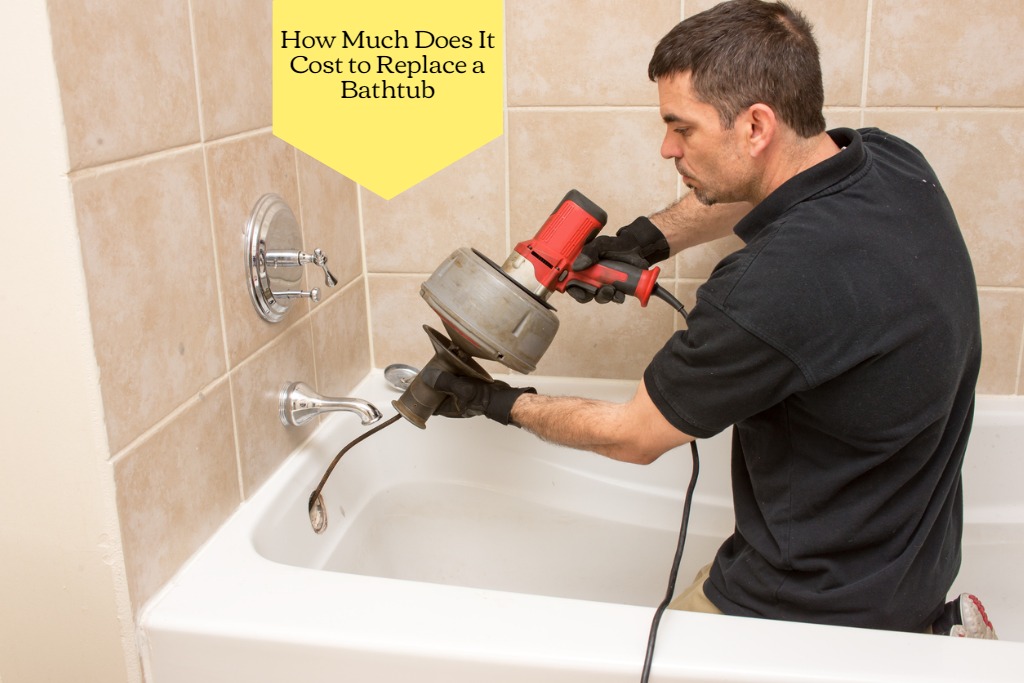Replacing a bathtub is not only a matter of choosing a new tub, But also considering the labor, potential modifications to plumbing, surrounding tile or wall repair, And disposal of the old unit. The cost to replace A bathtub can vary widely based on several factors, including the quality and style of the tub, where you live, Whether you’re doing it yourself or hiring A professional, and any unexpected issues that might arise during the process.
On average, homeowners can expect to spend anywhere from $300 for a basic tub and DIY installation to upwards of $5,000 or more for A high-end tub with professional installation. It’s essential to get A clear estimate of all costs involved to avoid any unwelcome surprises.
What’s the average cost to replace a bathtub?
The average cost to replace a bathtub can vary significantly depending on factors such as the type of bathtub, labor costs in your area, and any additional plumbing or structural work required. However, as a rough estimate, homeowners can expect to spend anywhere from $1,000 to $5,000 or more for a basic bath replacement, including the cost of the new bathtub, installation, and any necessary modifications to the surrounding area.
High-end or customized bathtubs can significantly increase the cost. It’s advisable to obtain quotes from local contractors to get a more accurate assessment for your specific project.
Why Consider Bathtub Replacement?
- Aesthetic Upgrade: Bathtub replacement allows homeowners to transform the look and feel of their bathroom by choosing a new bathtub that complements their desired aesthetic. Whether it’s a sleek, modern design or a vintage clawfoot tub, a new bath can greatly enhance the overall appearance of the bathroom.
- Functionality: Older or poorly designed bathtubs may lack essential features such as proper drainage, comfortable ergonomics, or sufficient depth for a relaxing soak. Replacing the bathtub can provide an opportunity to select a model that better suits one’s bathing preferences and needs, improving functionality and comfort.
- Accessibility: For individuals with mobility challenges or disabilities, bath replacement can be essential to make the bathroom more accessible and safe. Installing a walk-in Soaking tub or a tub with accessible features like grab bars and anti-slip surfaces can significantly improve bathroom accessibility and enhance the quality of life for those with special needs.
Factors Affecting Bathtub Replacement Costs
1. Bathtub Type

The type of bathtub you choose is a significant factor in determining replacement costs. There are several options available, each with its own price range. Standard alcove tubs, which fit into an enclosed space, are generally the most budget-friendly. Freestanding tubs and specialty tubs, such as whirlpool or jetted tubs, tend to be more expensive due to their design and features. Your choice of boaking tub type will directly impact the initial cost of the replacement project.
2. Material

The material of the bathtub also plays a crucial role in cost considerations. Common bathtub materials include acrylic, fiberglass, porcelain, and cast iron. Cast iron soaking tub, known for their durability and weight, are typically the most expensive. In contrast, acrylic and fiberglass tubs are often more budget-friendly options. Your preference for material will affect both the upfront cost and long-term maintenance requirements.
3. Installation

The complexity of the installation process can significantly affect replacement costs. If your bathroom requires extensive modifications to accommodate the new tub, such as moving plumbing or altering the surrounding tile and fixtures, you can expect higher installation costs. Additionally, factors like the location of your bathroom, accessibility, and the expertise of the installer can impact labor charges. A more straightforward installation may be less expensive, while a complex one can increase the overall project cost.
4. Plumbing and Fixtures

Upgrading your bathtub often involves plumbing work and the installation of fixtures. The choice of fixtures, such as faucets and handles, can range from basic to high-end, with corresponding price variations. If you’re opting for a tub with additional features like jets or a hand shower. You’ll need to consider the cost of both the fixtures and the plumbing work required to connect them. The quality and complexity of the plumbing and fixtures you choose will contribute to the overall cost.
5. Removal of the Old Tub

Removing the old bathtub is an essential step in the replacement process, and its cost should not be overlooked. Demolition and disposal of the old tub can add to the project’s expenses, especially if the old tub is heavy or difficult to access. The complexity of the removal process and any required repairs to the surrounding walls or flooring will impact the final cost of replacing your bathtubs. Properly accounting for the removal of the old tub ensures a smoother replacement project.
Are there any hidden fees in bathtub replacement?
Yes, there can be hidden fees in bathtub replacement projects. These hidden costs may include unexpected plumbing repairs, structural issues discovered during removal, disposal fees for the old tub, and any necessary upgrades to meet building codes or safety standards. Additionally, if you’re not well-informed or working with an inexperienced contractor, unforeseen complications can arise, leading to additional expenses. To avoid surprises, it’s crucial to have a detailed contract, conduct a thorough assessment beforehand. And work with reputable professionals who can provide a transparent estimate of all potential costs.
Are there any eco-friendly bathtub option?
Yes, there are several eco-friendly bathtub options available for environmentally conscious consumers. Some popular choices include bathtubs made from sustainable materials like bamboo, reclaimed wood, or recycled steel. Additionally, tubs designed for water conservation, such as those with low-fill capacities or built-in insulation for heat retention, can help reduce water and energy usage.
Freestanding tubs, which often require less water to fill. And refinishing or resurfacing existing tubs to extend their lifespan, are also eco-friendly choices. Furthermore, considering the soaking tub production process, certifications like WaterSense for water-efficient products. And its overall environmental impact can guide you towards making a greener choice for your bathroom.
The Final Thought
The cost of replacing a bathtub can vary greatly depending on various factors such as the type of bathtub, materials used, labor costs, and any additional features or renovations desired. On average, homeowners can expect to spend anywhere from $1,000 to $5,000 for a basic replacement project. However, it is important to remember that these are just general estimates and individual costs may differ significantly based on specific circumstances.
To ensure an accurate cost assessment and to get the best value for your investment. It is recommended to consult with professional contractors who can provide detailed quotes tailored to your needs. Don’t let the potential expense deter you from upgrading your bathroom – with proper planning and budgeting, replacing a boaking tub can be a worthwhile investment that adds


